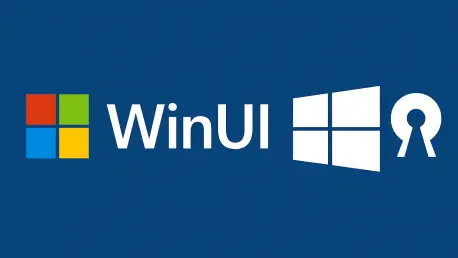In a groundbreaking move that has captured the attention of developers and tech enthusiasts alike, Microsoft has announced its intention to open-source key components of WinUI, the user interface framework integral to Windows 11. This decision signals a transformative shift in how the tech giant engages with the developer community, potentially redefining the future of operating system customization and innovation. Under the leadership of CEO Satya Nadella, Microsoft has increasingly embraced open-source principles, moving away from its historically proprietary stance. This latest initiative, focused on a critical element of Windows 11’s interface, is poised to foster collaboration and transparency while raising questions about security, scope, and long-term implications for the ecosystem. As details emerge about the phased rollout and governance models, the tech world watches closely to see how this bold step will shape the evolution of one of the most widely used operating systems.
A Strategic Shift in Software Development
Microsoft’s decision to open-source parts of WinUI represents a calculated pivot toward greater collaboration with the global developer community, aligning with a broader trend of transparency in technology. WinUI, which underpins essential elements of Windows 11 like the Start menu and app controls, is deeply woven into the operating system’s fabric, making this move both ambitious and complex. By releasing select components into the public domain, Microsoft aims to empower developers to tweak and enhance user interfaces, potentially accelerating advancements in areas such as accessibility features and performance tuning. The company has outlined a six-month roadmap to refactor code and establish clear guidelines for community contributions, ensuring a structured transition. This approach reflects an intent to harness external innovation while maintaining oversight over critical system elements, a balance that will be crucial to the initiative’s success.
Beyond the technical aspects, this shift underscores Microsoft’s evolving identity under Nadella’s stewardship, positioning the company as a leader in open innovation within the software industry. The open-sourcing of WinUI builds on previous successes with projects like Visual Studio Code and the .NET framework, which have thrived through community involvement. However, unlike those endeavors, WinUI’s integration with core Windows 11 components introduces unique challenges, including the need to safeguard proprietary layers and protect user data. Industry observers note that this initiative could inspire competitors to adopt similar strategies, potentially reshaping standards for operating system development. As Microsoft navigates this intricate process, the tech community remains eager to see how much control will be relinquished and whether this move will truly democratize UI customization for Windows 11.
Balancing Openness with Security Concerns
One of the most pressing considerations surrounding the open-sourcing of WinUI is how Microsoft will manage the delicate interplay between transparency and system security. Given WinUI’s deep ties to Windows 11’s core functionalities, separating publishable code from sensitive proprietary elements is no small feat. Microsoft has committed to a meticulous process of isolating components over the coming months, aiming to prevent vulnerabilities that could compromise user safety or system integrity. This cautious, phased rollout is designed to mitigate risks while allowing developers to contribute meaningfully to the framework’s evolution. Yet, the complexity of untangling these dependencies raises questions about the timeline and extent of community access, with some speculating that full open-sourcing may remain limited for the foreseeable future.
Community reactions, as seen in online discussions among developers, reveal a mix of optimism and skepticism about the initiative’s execution. Many welcome the prospect of faster bug fixes and feature enhancements driven by collective input, envisioning a more dynamic Windows ecosystem. However, there is also tempered realism about Microsoft’s track record with partial open-sourcing efforts in other projects, where community involvement has sometimes been constrained. Concerns linger over how much of WinUI will ultimately be accessible and whether contributions will be subject to stringent oversight. As Microsoft prepares to release previews of repositories, possibly on platforms like GitHub, stakeholders anticipate further clarity on the scope of engagement. This balance between fostering innovation and protecting critical infrastructure will likely define the success of this endeavor in the months ahead.
Implications for the Future of Windows Ecosystem
The open-sourcing of WinUI holds significant promise for the Windows 11 ecosystem, potentially ushering in a new era of customization and developer-driven progress. By inviting third-party contributions, Microsoft could see an influx of creative solutions tailored to diverse user needs, from enhanced interface designs to optimizations for emerging devices like handheld computing platforms. This collaborative model aligns with the company’s vision of Windows as a versatile, adaptable platform capable of meeting evolving technological demands. If successful, the initiative might reduce reliance on internal teams for updates, enabling quicker responses to user feedback and market trends. Such a shift could strengthen Windows 11’s position in a competitive landscape where flexibility and innovation are paramount.
Yet, the road ahead is not without hurdles, as the integration of community contributions into a tightly controlled operating system presents both technical and strategic challenges. Ensuring that external code meets Microsoft’s quality and security standards will require robust governance mechanisms, a process that may slow initial progress. Additionally, there is the question of how this move will influence industry dynamics, particularly in relation to competitors with more closed-off systems like macOS. Some analysts suggest that a successful rollout could pressure other tech giants to adopt greater transparency, setting a new benchmark for collaboration. As Microsoft refines its approach over the coming months, the impact on developer engagement and ecosystem vitality will become clearer, offering insights into the broader potential of open-source strategies in operating system design.
Reflecting on a Milestone in Tech Collaboration
Looking back, Microsoft’s decision to open-source components of WinUI for Windows 11 marked a defining moment in the company’s journey toward embracing community collaboration. The careful steps taken to separate proprietary elements from shareable code demonstrated a commitment to balancing innovation with security, even as challenges persisted in defining the scope of developer involvement. This initiative mirrored a growing industry trend favoring open-source principles, positioning Microsoft as a potential trailblazer in reimagining how operating systems evolve through collective effort. As the six-month roadmap progressed, stakeholders gained valuable insights into the possibilities and limitations of this approach. Moving forward, the focus should shift to refining governance models and expanding repository access, ensuring that developers can contribute effectively while maintaining system integrity. This development not only highlighted Microsoft’s strategic evolution but also paved the way for deeper conversations about the role of openness in shaping the future of technology.









